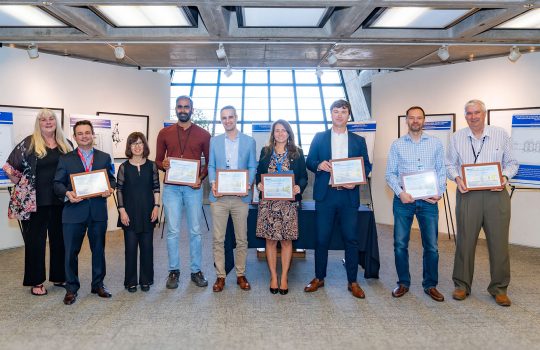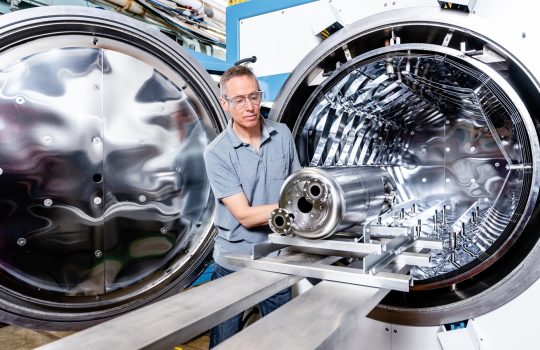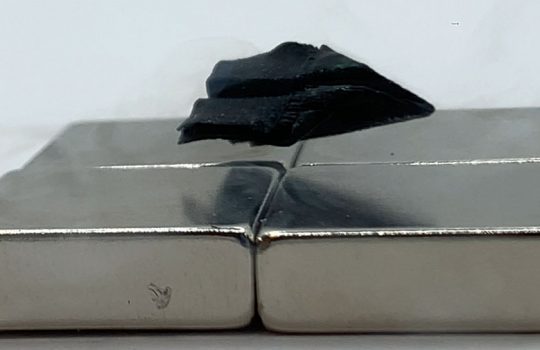For nearly a century, physicists have been colliding particles to gain insight into the nature of our physical world. This approach has driven some of the greatest breakthroughs in physics, including the discoveries of the top quark at Fermi National Accelerator Laboratory’s Tevatron accelerator and the Higgs boson at CERN’s Large Hadron Collider. Now, a new frontier in particle physics is beckoning: the potential to unlock scientific knowledge by colliding subatomic particles called muons. Once constructed, a muon collider could reveal new physical phenomena that revolutionize our understanding of energy, matter, space and time.
Muons, which belong to the lepton family along with electrons, tau leptons and corresponding neutrinos, are about 200 times heavier than electrons. Unlike protons —composite particles made of quarks and gluons — muons are fundamental particles with no known internal structure.
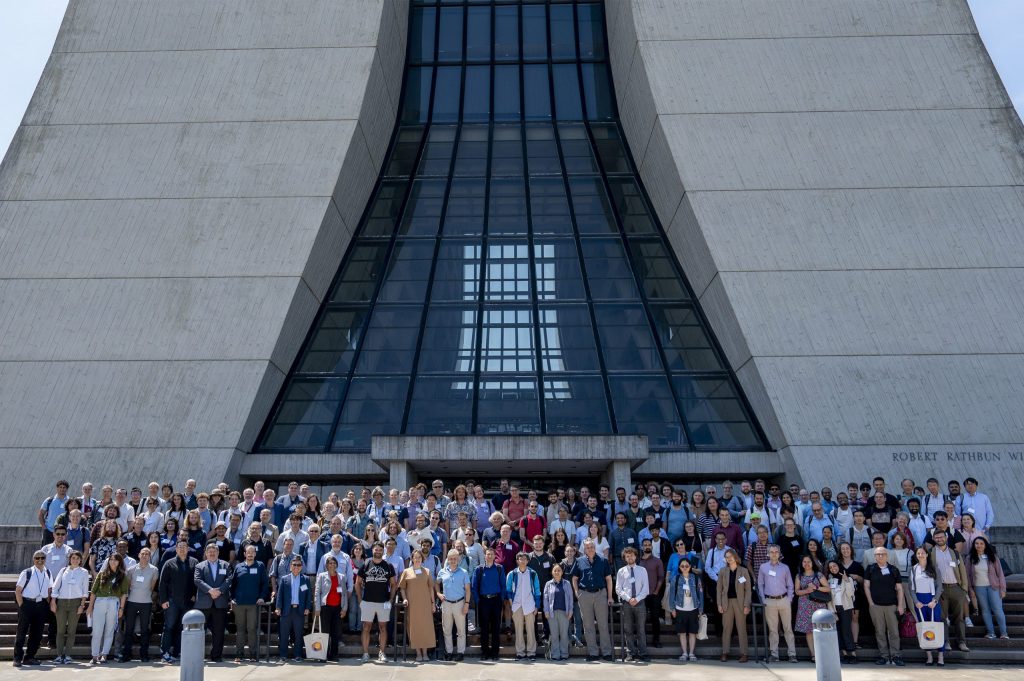
Short-lived particles
In particle colliders, high-energy collisions directly convert energy into new particles, demonstrating Einstein’s famous equation, E = mc2, which links matter and energy. One of the main advantages of the muon collider is that it will directly translate energy from the particle collisions into new particles without energy being transferred elsewhere.
Since muons are not made of smaller constituent particles like protons or charged atoms, their collisions would produce a cleaner dataset. In contrast, when protons or charged atoms collide, part of the energy is wasted on ejecting secondary particles from their internal structure rather than being fully used to generate new particles.
As a result, a muon collider will use a smaller footprint and less energy to generate new particles for study. For instance, a more power-efficient, 10 TeV muon collider could yield data comparable in physics reach to a 100 TeV Hadron Collider, and it would be approximately five times smaller in size.
However, there’s a significant challenge. Muons exist for just a few microseconds, making it difficult to harness their potential for study.
“While the concept of the muon collider dates back to the 1970s, practical obstacles kept it theoretical,” said Sergo Jindariani, a Fermilab scientist. “Recent advances in technology have renewed interest in the muon collider.”
Improvements in accelerator and detector technologies have brought new possibilities for physics research. Superconducting cavities now accelerate particles to higher energies, superconducting magnets can generate stronger magnetic fields, and the integration of precision timing capabilities and artificial intelligence into future detectors will revolutionize their capabilities.
While these technologies are advanced by today’s standards, experts agree that even further breakthroughs are required before a muon collider can be built. A collaboration of theorists, experimentalists and accelerator physicists will be essential to developing the tools and infrastructure needed to make the collider work.
A new generation
To jumpstart this ambitious project, around 300 researchers from across the nation gathered at Fermilab last August to discuss the technical challenges, build educational initiatives for the scientific community, and garner support for developing and building the collider.
“There was an especially large contingent of early-career researchers drawn to the promise of pioneering new physics,” said Jindariani. “The earliest we can start building the collider is maybe in the 2040s. This machine is really for future generations to pick up and conduct physics with.”
Kiley Kennedy is a postdoctoral researcher at Princeton University who works on the CMS detector at the Large Hadron Collider, and she attended the inaugural Muon Collider workshop.
“I came into particle physics as an undergrad in 2015, and I didn’t build the detector I work on,” said Kennedy. “I inherited it. It’s really cool to think about building a detector that hopefully I will be able to use.”
Kennedy added that senior researchers in the field might not have the opportunity to work on the collider when it’s fully constructed.
“I think they are paying it forward,” added Kennedy. “One quote that resonates with me is from Isaac Newton: ‘If I have seen further, it is by standing on the shoulders of giants.’ That’s really how I feel when I think about collider physics from the LHC to muon colliders.”
Condensing muons
One of the toughest technological challenges in colliding muons is condensing them to increase the number of collisions in the collider. Muons scatter after they are generated. Condensing the muons is like starting with a diffuse cloud the size of a basketball and compressing it into a smooth, dense cluster the size of a marble.
A critical step toward building a muon collider is developing a prototype of a muon ionization cooling demonstrator to help researchers tackle the challenge of condensing muons. Once completed, the prototype will harness a sequence of powerful magnets, absorber materials and cavities that contain electromagnetic energy to precisely squeeze the muons closer together, increasing the number of collisions between groups of muons.
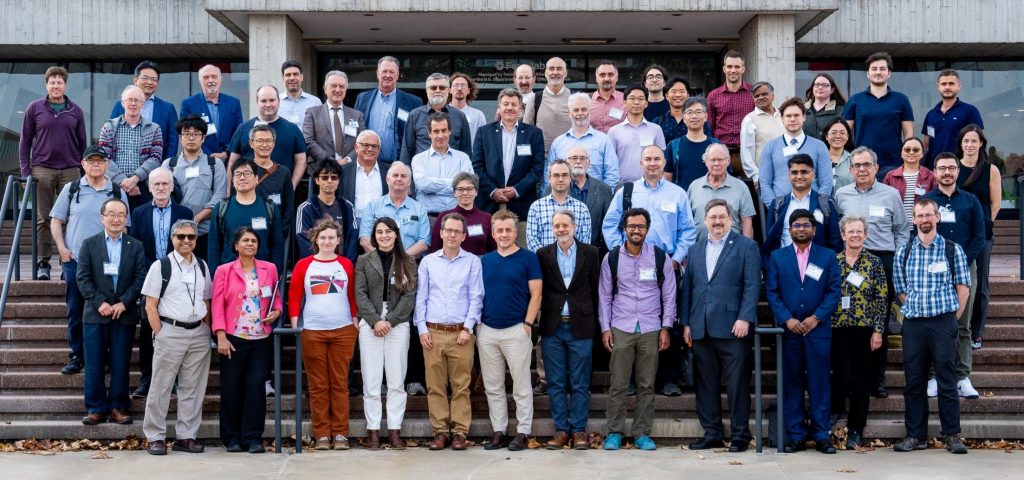
A second, smaller workshop in October helped researchers conceptualize the details of this prototype, including the required equipment, space and timelines.
“The International Workshop on Ionization Cooling Demonstrator set the stage for building a prototype cooling system called the demonstrator,” said Diktys Stratakis, a Fermilab scientist. “Building the demonstrator would be a major step toward the muon collider.”
The International Muon Collider Collaboration aims to have the demonstrator operating by the 2030s. While the collaboration is international in scope, the ionization cooling demonstrator and the eventual full-scale muon collider could ultimately be constructed at Fermilab, bringing the next generation of particle physics capabilities to the United States.
Fermi National Accelerator Laboratory is America’s premier national laboratory for particle physics and accelerator research. Fermi Forward Discovery Group manages Fermilab for the U.S. Department of Energy Office of Science. Visit Fermilab’s website at www.fnal.gov and follow us on social media.

